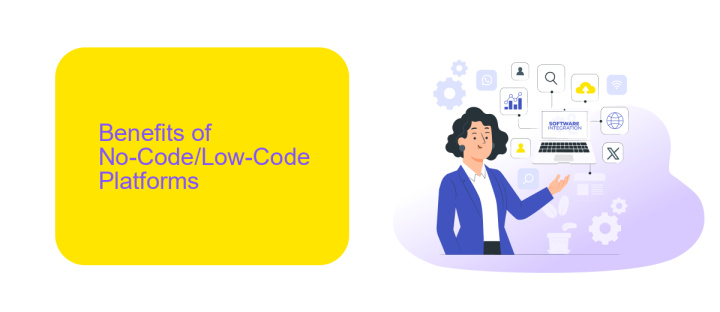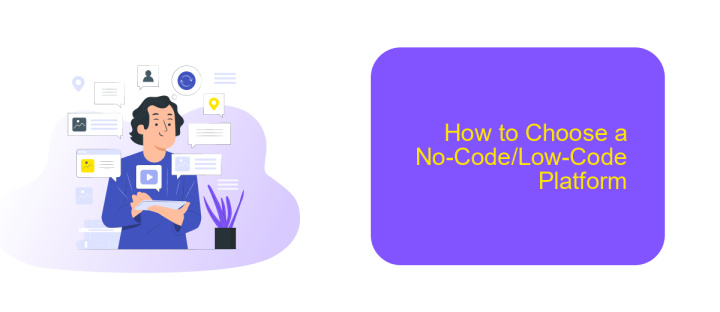No-Code Low-Code Platforms
No-code and low-code platforms are revolutionizing the way businesses develop software by enabling users with little to no programming experience to create applications quickly and efficiently. These platforms provide intuitive interfaces and pre-built templates, allowing for rapid development and deployment. This article explores the benefits, challenges, and future potential of no-code and low-code solutions in the ever-evolving tech landscape.
Introduction
No-Code and Low-Code platforms are revolutionizing the way businesses approach software development. These platforms enable users with little to no coding experience to create applications, automate workflows, and integrate various services seamlessly. By simplifying the development process, they empower a broader audience to participate in digital transformation initiatives.
- Accelerated development cycles
- Reduced dependency on specialized developers
- Enhanced collaboration between technical and non-technical teams
One of the key advantages of these platforms is their ability to integrate disparate systems effortlessly. For instance, ApiX-Drive offers a robust solution for connecting various applications and automating data flows without the need for complex coding. This not only saves time but also ensures that businesses can adapt quickly to changing market demands. As a result, No-Code and Low-Code platforms are becoming indispensable tools in the modern business landscape.
Benefits of No-Code/Low-Code Platforms

No-Code and Low-Code platforms offer numerous benefits, making software development accessible to a broader audience. One of the primary advantages is the significant reduction in development time. By utilizing visual interfaces and pre-built modules, users can quickly create and deploy applications without extensive coding knowledge. This accelerates the time-to-market for new products and allows businesses to respond swiftly to changing market demands.
Another key benefit is the cost-effectiveness of these platforms. Traditional software development often requires hiring specialized developers, which can be expensive. No-Code/Low-Code platforms eliminate this need, enabling non-technical staff to build and maintain applications. Additionally, these platforms often come with built-in integration capabilities. For instance, ApiX-Drive facilitates seamless integration between various services, allowing businesses to automate workflows and enhance productivity without requiring complex coding skills.
Types of No-Code/Low-Code Platforms

No-code and low-code platforms are transforming the way businesses develop applications by simplifying the process and reducing the need for extensive coding knowledge. These platforms can be broadly categorized into several types based on their primary functionalities and use cases.
- Business Process Management (BPM) Platforms: These platforms focus on automating and optimizing business processes. They provide visual tools for designing workflows and integrating various business applications.
- Application Development Platforms: These platforms allow users to create complex applications without deep coding expertise. They offer drag-and-drop interfaces and pre-built templates for rapid development.
- Integration Platforms: Tools like ApiX-Drive fall into this category, enabling seamless integration between various software applications. They simplify data transfer and synchronization across different systems.
- Website and E-commerce Builders: These platforms are designed for creating websites and online stores with ease. They offer customizable templates, drag-and-drop editors, and e-commerce functionalities.
Each type of no-code/low-code platform serves a specific purpose, catering to different business needs. By leveraging these tools, organizations can accelerate their digital transformation, reduce development costs, and empower non-technical users to contribute to application development and process automation.
How to Choose a No-Code/Low-Code Platform

Choosing the right No-Code/Low-Code platform can be a game-changer for your business. Start by identifying your specific needs and goals. Are you looking to build a simple website, a mobile app, or automate workflows? Understanding your requirements will help you narrow down the options.
Next, consider the platform's ease of use and learning curve. Some platforms are more intuitive than others, so it's crucial to select one that matches your team's skill level. Additionally, evaluate the platform's scalability and flexibility to ensure it can grow with your business.
- Identify your specific needs and goals
- Evaluate ease of use and learning curve
- Check for scalability and flexibility
- Review available integrations and automation tools
Lastly, don't overlook the importance of integrations. A platform like ApiX-Drive can simplify connecting various applications and automating workflows, saving you time and effort. By carefully considering these factors, you can choose a No-Code/Low-Code platform that best suits your business needs.
- Automate the work of an online store or landing
- Empower through integration
- Don't spend money on programmers and integrators
- Save time by automating routine tasks
Examples and Use Cases
No-Code and Low-Code platforms have revolutionized the way businesses and individuals approach software development. For instance, platforms like Bubble and Adalo enable users to create fully functional web and mobile applications without writing a single line of code. These platforms provide drag-and-drop interfaces, pre-built templates, and extensive libraries of plugins to accelerate the development process. They are particularly useful for startups and small businesses that need to deploy solutions quickly without the overhead of hiring a full development team.
Moreover, integrating various services and automating workflows has become simpler with tools like ApiX-Drive. This service allows users to connect different applications and automate data transfers between them effortlessly, without coding skills. For example, a business can automate the process of transferring leads from a web form to a CRM system, ensuring that no potential customer is overlooked. Such integrations save time, reduce errors, and streamline operations, making them invaluable for businesses of all sizes.
FAQ
What are No-Code and Low-Code platforms?
Who can benefit from using No-Code and Low-Code platforms?
What types of applications can be built using No-Code and Low-Code platforms?
How do No-Code and Low-Code platforms handle integrations with other systems?
Are No-Code and Low-Code platforms secure?
Do you want to achieve your goals in business, career and life faster and better? Do it with ApiX-Drive – a tool that will remove a significant part of the routine from workflows and free up additional time to achieve your goals. Test the capabilities of Apix-Drive for free – see for yourself the effectiveness of the tool.


